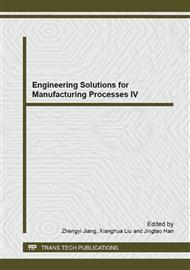p.479
p.483
p.488
p.493
p.497
p.501
p.507
p.513
p.518
Experimental Research on Conductor's Ice Accretion and Aerodynamic Characteristics
Abstract:
For conductor commonly used in power project, research was conducted on its ice accretion and aerodynamic characteristics. Ice mass and ice shape were examined under various icing condition: time, temperature and wind speed. Ice mass increases linearly with time, while the growth rate varies significantly with wind speed. Ice mass does not increase with the fall of temperature; it reaches the max value in a relatively high temperature range of-5°C~-10°C. Ice shape and ice thickness are both important factors that determine conductors aerodynamic characteristics. Sudden increase of lift coefficient may happen at low attack angle for conductor with thick crescent ice shape.
Info:
Periodical:
Pages:
497-500
Citation:
Online since:
February 2014
Authors:
Keywords:
Price:
Сopyright:
© 2014 Trans Tech Publications Ltd. All Rights Reserved
Share:
Citation:


